Besides the activities listed on the previous page that are closer to the Northwest beach areas, there are other great adventures throughout the entire country of Costa Rica. We have included this list below; we definitely agree with the choices here, but again, this list is most definitely not complete!
We have put an asterisk beside those tours or activities that we have had the pleasure to personally experience. We can honestly say that ALL of these activities were totally exhilarating and definitely worthwhile! The rest are places that we haven't visited yet but definitely plan to do so.
The text below is from the "Travel Guide to Costa Rica" by Hunter Publishing.
Our list of “Top 20 Things to Do or See” is a guide to the best that Costa Rica has to offer. It’s not in any order, nor does it cover anywhere near all of the country’s attractions. But it should give you some food for thought in planning your vacation. Happy trails to you!
| *1. ARENAL VOLCANO NATIONAL PARK: | |
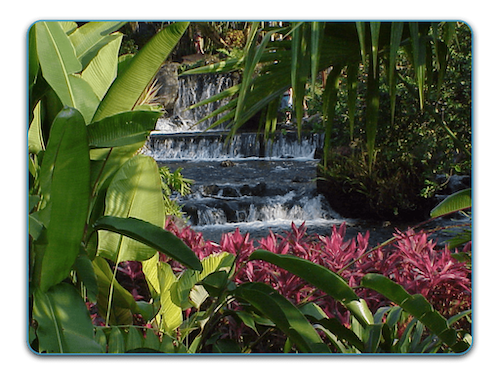 |
Famous for its nighttime lava fireworks, Arenal Volcano towers above a lovely lake of the same name. The area has plenty of natural activities, eco-adventures, and the lake is particularly popular with fishermen and windsurfers. The thermal springs at nearby Tabacón Resort Hot Springs offer a refreshing dip any time of the day. The volcano itself rumbles frequently and, if not socked in by clouds, is very impressive – and just a tad exciting. Editorial note: Arenal Volcano has become more dormant in the past few years. |
| *2. MONTEVERDE: | |
 |
The 10,526 hectare / 26,000 acre Monteverde Cloud Forest Reserve, nestled in moisture-filled hanging clouds, provides a home to thousands of species of plants, animals and insects. It offers a unique opportunity to experience, up close, the beauty of nature unspoiled – the reason we all come to Costa Rica. If you can’t make it here, try the Los Angeles Cloud Forest or Tapantí-Macizo de la Muerte Cloud Forest. Monte Verde is the best place in Costa Rica to see the elusive quetzal bird and has the most concentration of bird types in Costa Rica. |
| *3. MANUEL ANTONIO: | |
 |
This is prime real estate. Manuel Antonio National Park has three white sandy connecting beaches and a forest filled with a variety of monkeys. It sits at the base of a mountain on a peninsula that eagerly stretches out to greet the Pacific Ocean beyond and boasts magnificent flora and fauna, as well as fantastic views both in and out of the park. Manuel Antonio guided nature hike is well worth your time and money to do - 3 different species of monkeys, and sloths are very common here. |
| 4. TORTUGUERO: | |
 |
Bordered by the Caribbean Sea, Tortuguero National Park contains an incredible network of navigable canals, and boats are the only way to get around. Mangrove forests that edge the canals are the place to look for wildlife. The park’s 37 km/23 miles of beaches are protected nesting grounds for the green sea turtle. In season (July to October), you can accompany a guide to the beaches at night and watch turtles lay their eggs. It is a memorable experience. Other seasons offer plenty of non-turtle related nature sightseeing. |
| *5. CANOPY (TREE TOP) TOURS: | |
 |
Most of the rainforest’s life dwells in the canopy, high above ground. Consequently, there are a large number of “canopy tours” offered. Most are geared to having a wild ride rather than studying wildlife – but what fun it is. In the popular and ubiquitous versions you slide from tree platform to tree platform, safely attached in a harness, on a thick cable. It is thrilling to zip across the forest like a high-tech Tarzan, and kids love it. If you would like more cerebral and sedate fun, take the *“Aerial Tram.” It offers a monkey’s view of the surrounding jungle at various levels in the canopy, while seated in a slow-moving cable car and accompanied by a naturalist guide. There is also a “SkyWalk” that features incredibly high wire bridges between trees and above deep gorges. Our favorite places to go in search of such thrills are “Kazm Cañon,” which offers rappelling and slides over the Río Colorado next to Rincón de la Vieja National Park; and the waterfalls near Manuel Antonio, where you can rappel down the falls. All of these types of activities are referred to as “canyoning.” WARNING: Many of these adventures contain an element of danger, so be selective. |
| *6. WHITEWATER RAFTING!!!: | |
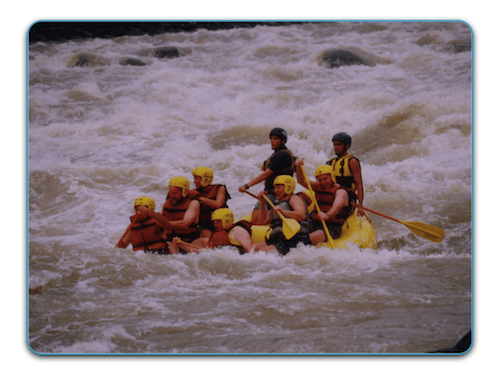 |
Costa Rica is famous for its whitewater river raft trips through the rain forest. Rafting is one of the best ways to spend a day. You can even opt for an overnight trip with a stay in a riverside lodge deep in the rain forest. Our favorite ride is on the Pacuare River, where you are rushed through primary and secondary forests and an impressively deep gorge. The Class III and IV rapids will thrill experienced rafters. Safety-oriented professional guides provide a trip well suited for everyone from Grandma to Junior. Exciting, exhilarating, and intoxicating. Other regional rivers also offer challenging rides. |
| 7. LANKESTER GARDENS: | |
 |
Wander along the 17 km/10.6 miles of trails that lead throughout the Lankester Gardens outside of Cartago. Among colorful open garden beds and a cool shady forest, enjoy the countless varieties of orchids, bromeliads, cacti and palms that are grown here for botanical study as well as your viewing. Guides are available. You can combine tours to Lankester Gardens and Irazu Volcano crater on the same day since both are in the same general area. |
| *8. BIRDWATCHING - IN SEARCH OF THE QUETZAL: | |
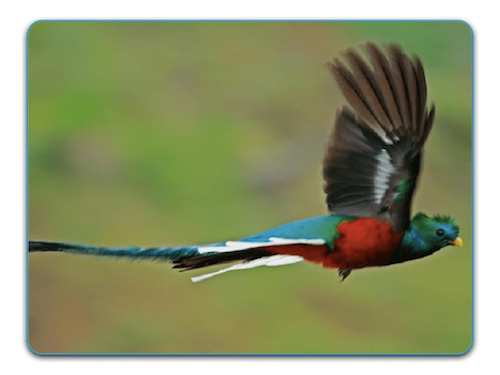 |
Everyone heads to Monteverde to look for the quetzal, the colorful native bird that is an enduring symbol of freedom. If you’re going north, by all means keep an eye out. But we think the best chance to find the elusive quetzal is off the Inter-American Highway that connects San Isidro and Cartago. This highway crosses Costa Rica’s highest mountains along the Cerro de la Muerte and there are several lodges here that cater to birdwatchers. Practically all mountain nature lodges have guides for hire and offer the opportunity to stay and watch for quetzals. Nesting season for these magnificent birds is March through May, and that’s the best time for a sighting. But it is possible, if you’re lucky, to catch a glimpse of one any time of the year. Monteverde Quetzal Tour. |
| *9. IRAZU VOLCANO NATIONAL PARK: | |
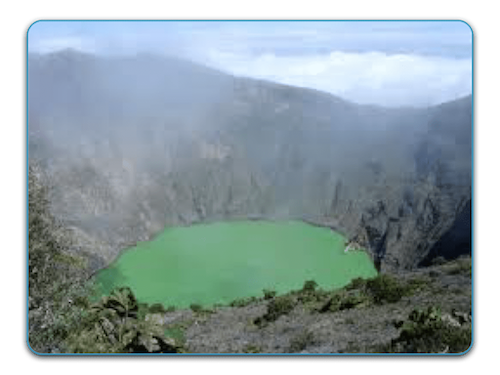 |
The 11,260-foot-tall Irazú Volcano is the highest in Costa Rica and still considered active, even though its last major eruption was on March 19, 1963, the day that President John F. Kennedy arrived in Costa Rica. Today, a few puffs of steam and smoke are the most activity you’re likely to see. To get here you’ll cross a wide expanse of dark gray barren land resembling a moonscape. At the rim, the sight of the crater filled with pea-green sulfur-laden water – surrounded by a rugged rocky cliff face – leaves one breathless. |
| *10. POAS VOLCANO NATIONAL PARK: | |
 |
Wending its way through fertile farmland and forest stands is a long, panoramic, twisting road, leading up the mountainside to the Poás Volcano. Its crater, filled with turquoise water, is over a mile across and is said to be the second-largest active volcano crater in the world. Occasionally, the crater still boils and shoots steam geysers. Poás Volcano is situated in a protected national park of the same name that offers visitors an information center, a colorful slide show about the volcano, and is the starting point for several well-marked trails around the moonscape crater’s rim. Editorial note: Poas Volcano National Park has recently become more active and was actually closed after a series of eruptions in April of 2017. However, it is scheduled to reopen again in September 2018. |
| 11. CORCOVADO: | |
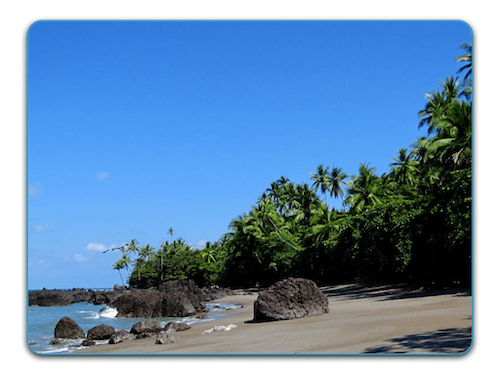 |
The Corcovado National Park is the largest tract of virgin rain forest in Costa Rica and covers more than half of the Osa Peninsula. Famous for its scarlet macaws and a multitude of other wildlife, it is a colorful must-see for adventure naturalists. This area of Costa Rica is probably the least known area of the country and is more rustic but incredibly beautiful. It is recommended to fly from San Jose rather than to drive down as the roads can be in very poor shape. |
| 12. CAHUITA: | |
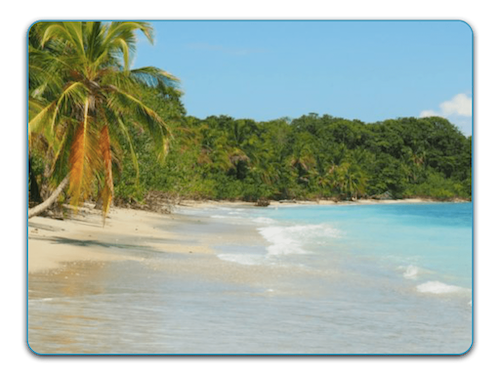 |
Cahuita is laid back and friendly, a place to rest and rejuvenate during the day – and the hot spot for dancing at night. It contains two inviting beaches, one white and one black. Cahuita National Park offers it all – camping, biking, hiking, snorkeling, and more – and is guarded from the treetops by vociferous howler monkeys. Travel farther south to Puerto Viejo to find yet another inviting small beach town with an even more relaxed beat. With a large selection of accommodations and eateries, it makes a good base to cover the whole coast down to the Panamanian border. Worth all the time that you can afford. |
| 13. NATIONAL THEATER & GOLD MUSEUM: | |
 |
Right in the heart of San José, alongside the Plaza de la Cultura, is the imposing National Theater (right). Designed by Belgian architects and decorated by Italian artists, the 1,000-seat stone and metal structure offers performances by the world’s most famous of artists. Don’t miss seeing its fabulous gold gilt interior and be sure to have afternoon tea in the theater’s café. The Gold Museum (page 124) is found below the Plaza de la Cultura, to the rear of the National Theater. You'll see 2,000 pre-Columbian gold artifacts. |
| 14. JADE MUSEUM: | |
 |
Eye-popping pre-Columbian jade, gold and stone art are featured at the Jade Museum, located at the top of the INS building in San José. In addition, frequently changing exhibitions of artists’ works will enhance your pleasure. It is easy to combine visits to the Jade Museum, National Theater, Gold Museum, plus other great historical and architectural structures during a vist to central San Jose. |
| 15. BUTTERFLY FARM & INSECT MUSEUM: | |
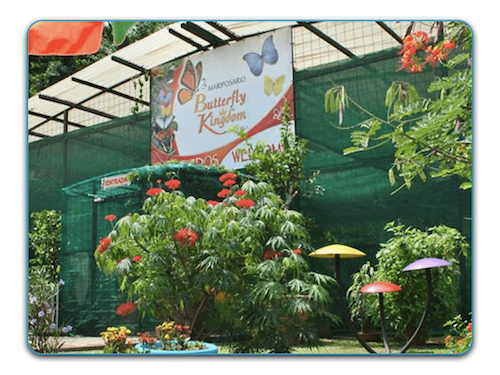 |
The Butterfly Farm near Alajuela is Latin America’s first and largest exporter of farm-raised butterflies. All visitors get a guided two-hour tour, which fits in well with the Café Britt Coffee Tour during a day of sightseeing. There are now many smaller butterfly farm imitators, but one that’s impossible to imitate is Dr. Richard Whitten’s Jewels of the Rainforest Exhibit. Headquartered at the Hotel Chalet Tirol, his extensive collection of weird and wonderful insects, butterflies, bugs and beetles are artistically displayed and accompanied by educational videos, brochures and, if you’re lucky, the personal attention of Dr. Whitten or his charming Scottish wife (both accomplished organ players). Another biological attraction is InBio Park, a private project to categorize Costa Rica’s diverse insect and plant life, as well as educate and entertain visitors. |
| *16. RINCON DE LA VIEJA PARK: | |
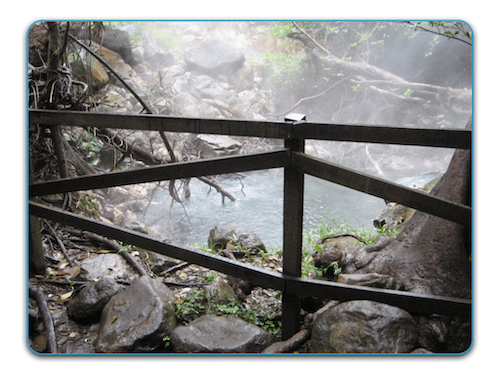 |
This park surrounds the flanks of the Rincón de la Vieja Volcano and its active crater. Many excellent hiking trails traverse this diverse landscape with its hot springs, geysers, mud pots, waterfalls, volcanic craters and a lake. This is a favorite destination for birdwatchers, offering fabulous views of the lowland pastures and rich wildlife Editorial note: Due to recent activity at RDLV Volcano, the hike to the crater at the top of the volcano has been suspended. |
| *17. SARCHI & COFFEE TOWNS: | |
 |
Sarchí is your town if you like to shop. Filled with handicraft stores and small factories, it is best known as the home of the colorfully hand-painted Costa Rican oxcarts (carretas), which can be purchased in all sizes (and shipped home). But the town also offers fine furniture and other wooden articles, as well as leather, metal and fabric creations. Enjoy an oxcart painting demonstration at the Plaza de la Artesania shopping mall, then later select from one of the many restaurants for dinner. When you’re shopped out, take a short side trip to nearby Zarcero. In the center of town you’ll enjoy the whimsical and photogenic topiary featuring animal figures from sculpted cypress. A long tunnel of connecting bushes that look like melted Hershey’s kisses, lead to an inviting red and white church beyond. Living art. |
| *18. NATURE LODGES: | |
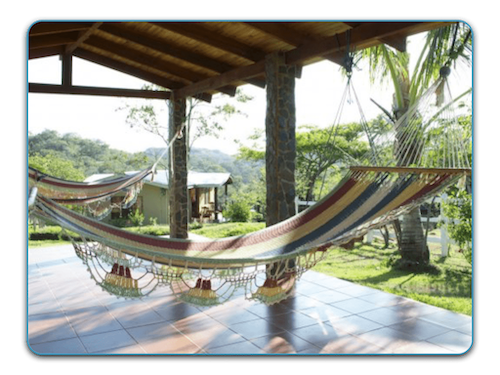 |
Your cruise ship friends couldn’t imagine, spend at least a night in one of the many ecological nature lodges that offer rustic accommodations. You owe it to yourself to experience the diverse unspoiled countryside, away from the traffic and noise pollution of the cities and towns. Pictured here is Rinconcito Lodge which is located near Rincon de la Vieja National Park in the province of Guanacaste. |
| *19. BEACHES, RIVERS, WATER EVERYWHERE!: | |
 |
There is a plethora of beaches awaiting you on the Caribbean and Pacific Ocean coasts of Costa Rica. They come in a variety of colors with sands that run from white to black and textures ranging from powder soft to coarse and gritty. Public beaches, isolated beaches, great surfing beaches, laze-around beaches – whatever you prefer, it’s there. If sand between your toes is not your style, then swim, sail, whitewater rafting, kayak or windsurf on the many rivers and lakes between coasts. Or choose the ultimate way to relax – soak in hot springs then cool down beneath a waterfall. |
| *20. FISHING: | |
 |
There is a growing number of qualified operators that offer competitive, world-class sport-fishing charters on both coasts. In the Pacific, marlin, sailfish, tuna and dorado lure the enthusiastic angler. In the turquoise waters of the Caribbean, at the mouth of the Barra del Colorado in particular, tarpon and snook are yours for the catching (and releasing). The beautiful 35-km-long (22-mile) Arenal Lake contains freshwater rainbow bass (guapote). In their eagerness to get hooked, they will practically pull you into the water. In the mountains, a short drive from San José, you will find fishing locations for trout and other freshwater species. A fishing license is required for inland angling (except on private property). |
Another that we would personally like to add is:
| *21. LA PAZ WATERFALL: | |
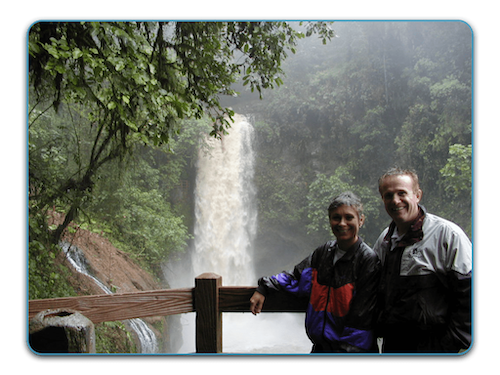 |
This splendid and popular nature and wildlife park features the largest butterfly garden in the world, enclosed in a soaring hangar-size cage within which butterflies flutter freely. There’s also a hummingbird garden, a rainforest wildlife exhibit, and orchid houses, all accessed by concrete trails that lead along the river to four waterfalls; educational posters line the trails. Standing on the viewing platform at the Templo Fall, you’re pummeled by spray blasted from the base of the fall, a testament to its awesome hydraulic power. Continuing downriver, you get to a metal staircase that clings to the cliffside and takes you to the Magía Blanca (the largest cascade), Encantada, and La Paz falls. A short distance further downhill, at a tight hairpin bend in the road, is La Catarata la Paz—the “Peace Waterfall”—a pencil-thin fall that attracts Ticos on weekends (watch for pedestrians in the road). The restaurant here has a veranda with marvelous views over the valley and forest. Birding tours are led by Dr. Aaron Sekerak, author of A Travel & Suite Guide to Birds of Costa Rica. Last admission is 4 p.m. |

